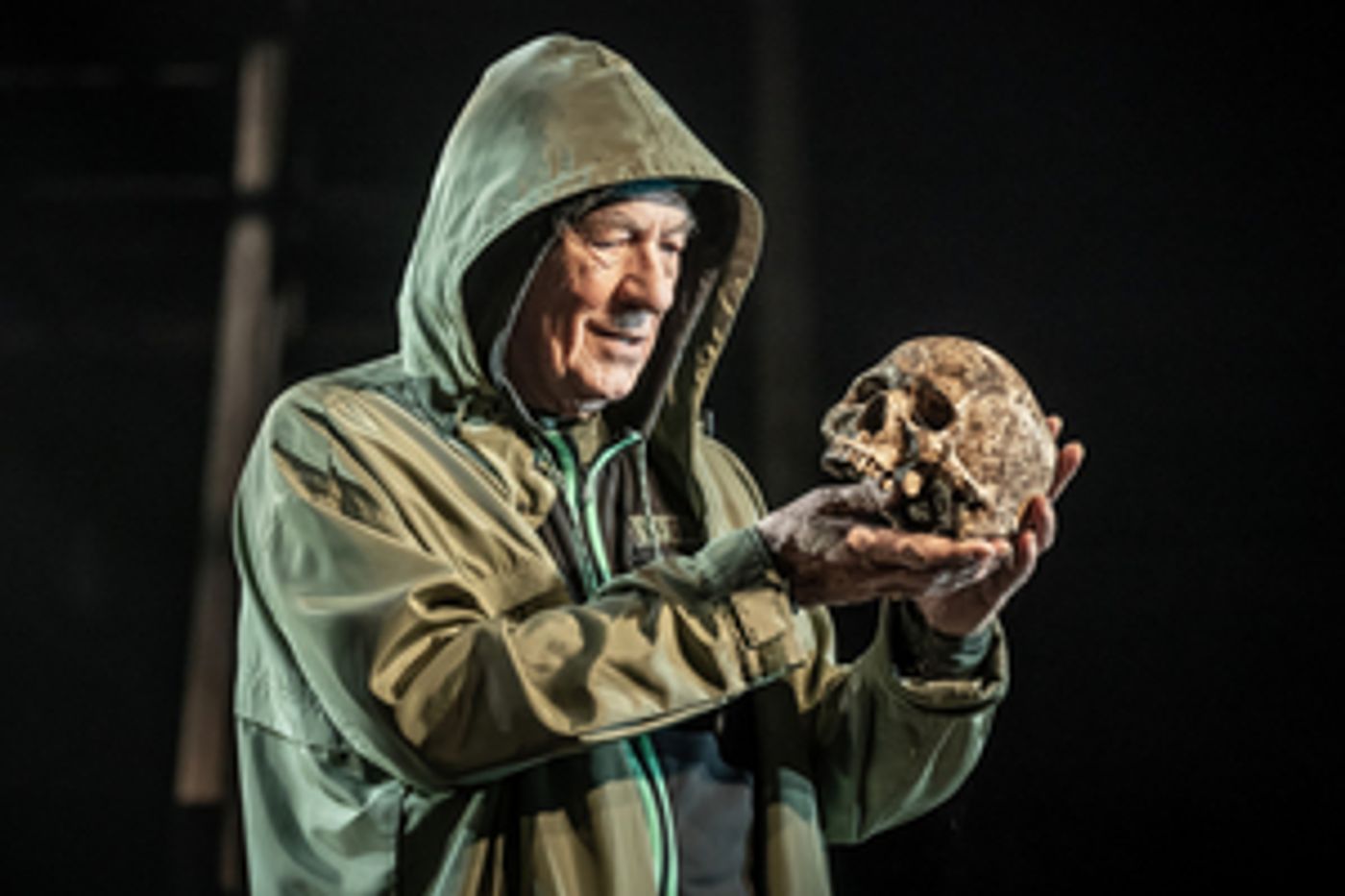Review: HAMLET, Theatre Royal Windsor
Fifty years after his first Hamlet, Sir Ian McKellen reprises the role in Windsor.

![]() The hottest Hamlet on the English scene is an octogenarian. But Ian McKellen's latest stage appearance in Windsor is far from being a geriatric production. In the run up to their opening, McKellen and the company described it as "age blind", almost an experiment to see how the visual aspect of a Shakespeare play impacts the content. The resulting answer is slightly difficult to pin down. Hamlet's perceived age changes the dynamics in our heads, but, surprisingly, it doesn't matter much.
The hottest Hamlet on the English scene is an octogenarian. But Ian McKellen's latest stage appearance in Windsor is far from being a geriatric production. In the run up to their opening, McKellen and the company described it as "age blind", almost an experiment to see how the visual aspect of a Shakespeare play impacts the content. The resulting answer is slightly difficult to pin down. Hamlet's perceived age changes the dynamics in our heads, but, surprisingly, it doesn't matter much.
Ophelia is young, as well as most of the cast. Hamlet is older than his mum and uncle-turned-stepdad. The production could easily be reduced to a vanity project, and Sir Ian would have all the rights to do it with his kind of resumé.
In the program, director Sean Mathias writes that "There is something irresistible about Hamlet", and he is right. There is also something about Sir Ian McKellen playing the same role he did exactly half a century ago. It's a seductive idea.
There's a fair argument that younger actors are hardly ever ready to be Hamlet, that they don't have the emotional intelligence and life experience to do the role justice. Mathias and Bill Kenwright's venture fans the sparks of this debate.
At 82 years of age, McKellen delivers a razor-sharp and silver-tongued Prince of Denmark. He doesn't pretend to be younger than he is, but he also doesn't play into his age. He lets Shakespeare's words do the job for him. His age and maturity make him a hypnotising Prince, leading his audience to go with it and accept a wizened Hamlet.
It's rather surprising to say, but this Hamlet is genuinely - and unbelievably - funny. McKellen isn't fazed by the gravitas that usually follows his character; he breaks the solemnity of the script and finds the comedy in the tragedy. Instead of receiving the standard, almost uncomfortable cackles that the play's turns of phrase and one-liners usually get, he lets his audience genuinely savour and enjoy these brief comedic scattered instances.
While McKellen is easily deemed the main attraction, his supporting cast is equally compelling. Alis Wyn Davies creeps up and turns into the star of the show as Ophelia. She introduces an infatuated girl who composes music on Hamlet's letters to her and reaches the end of her performance as a cursed musical artist going through a nervous breakdown (she even pulls a Britney and returns to the stage for her last scene with a buzz-cut). She is truly heartbreaking.
Mathias plays it safe and smart with their romance. He removes most of the sexual and romantic implications between Hamlet and Ophelia, so the two are (thankfully) not turned into a cautionary tale about predatory men. Instead, their relationship becomes the shadow of platonic admiration and fondness.
Jenny Seagrove and Jonathan Hyde are the happy newlyweds of Denmark. Seagrove is an emotional but glacial Gertrude; she seems genuinely happy with her once brother-in-law and now husband, but deeply loves her son too. Her affection is matched by Hydes's imperiousness and thirst for power. He is poised in his arrogance, finally showing his true colours when he giddily plots Hamlet's death with Laertes.
While Seagrove puts on a teutonic accent, Hyde's performance somehow visually echoes Tobias Menzies as Prince Philip in The Crown. It's up to debate whether this was done on purpose to allude to the origins of the real-life Mountbatten-Windsors or just a happy coincidence.
The director reduces the original four hours of the complete text to a mere two hours and 45 minutes. The cuts are nimble and sly, but still visible. The director plays seamstress in favour of a better comprehension, streamlining the speeches here and there, turning this Hamlet into one of the easiest to understand and follow without getting rid of the beauty of the text.
The only truly unfortunate note is the presence of additional seating on stage. These seats should place the audience right in the middle of the action, giving the public a different perspective and altering the experience. Alas, it's not quite as idyllic as it seems. It's a production that's configured to be viewed frontally, there's no doubt in that.
Designer Lee Newby dresses the stage with an elevated passageway that disperses the action on different levels. This bridge-like structure is the size of the stage, hovering over the two sets of bleachers placed along the wings. With a big portion of the performance being directed towards the normal seats plus the comings and goings happening overhead, the sight-lines from these seats are severely impaired. Sure, the shadow-play of the set can be better enjoyed from the stage, but at what cost?
This makes the addition of the benches feel like an afterthought; somewhat of a ruse to pull more people into the house during these difficult times where closure is just a ping away.
By the end of it, the Mathias/McKellen experiment is a successful one. Once the public sets aside their preconceptions around who Hamlet should be, Shakespeare and a clockwork company do the rest. And let's be real, Sir Ian is a magnificent Hamlet.
Hamlet runs at Theatre Royal Windsor until 25 September.
Photo credit: Tristram Kenton
Reader Reviews
Videos

